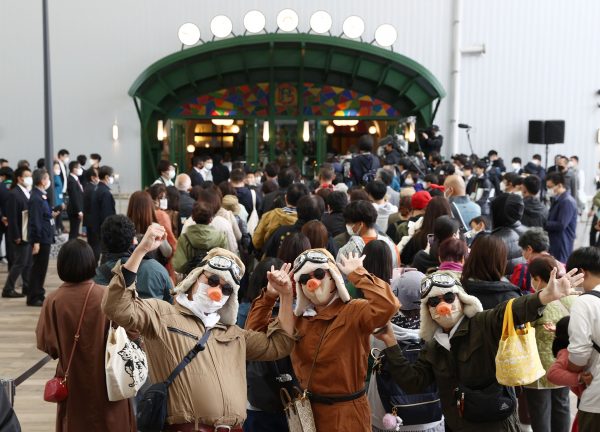Since April 2020, shortly before then prime minister Shinzo Abe declared Japan’s first COVID-19 state of emergency, the country had followed a strategy of keeping its borders shut to inbound travel by non-nationals. For the first five months, this policy even targeted long-term foreign residents.
There were a few exceptions, such as the Olympic/Paralympic travel bubble in 2021 and the so-called business and residence track. This avenue opened in August 2020 and was terminated in January 2021 by then prime minister Yoshihide Suga as the Delta variant spread.
Prime Minister Fumio Kishida’s border policy also vacillated between tightening and relaxing. In December 2021, new entries of foreign nationals were banned as the Omicron variant emerged. By 7 September 2022, the pre-departure PCR-test mandate for vaccinated travellers had been omitted.
All three administrations in office since the start of the pandemic have been hovering between two competing policy interests: public health and economic strength. On the one hand, former finance minister Taro Aso spoke of a higher mindo (cultural level) of Japanese people. He deemed this to be a crucial factor in ensuring compliance with COVID-19 countermeasures.
For Aso and other conservative politicians, keeping potentially deviant foreign influences out is a pre-condition for managing the pandemic through soft measures at home. On the other hand, Japanese and foreign business representatives have long pointed out the need to globalise Japan’s workforce. It is no surprise that the bulk of people who entered Japan in 2020 on the business and residence track were technical trainees. Trainees continue to play an important role in Japan’s low-skilled labour sector, despite scandals revealing workers’ maltreatment.
Amid the back and forth, three developments can explain Kishida’s decision to re-open Japan on such short notice.
First, international border measures have largely converged on relaxation. Other G7 nations have re-established international travel for non-nationals and adopted a ‘new normal’ lifestyle. Several Asian nations are easing their border controls, including South Korea, Taiwan, Thailand and even Hong Kong.
Japan opted to join this trend. Kishida’s New York speech pointed to his role as the incoming G7 president and his responsibility to ‘build a nation that grows together with the rest of the world’ — something unimaginable without international mobility. There are also concerns that Japan is losing out to its regional neighbours.
Second, Japan’s opposition parties have long been critical of its closed border policy. In October 2021, Shu Sakurai of the Constitutional Democratic Party of Japan pointed out the inconsistent regulation for international students, which allowed only those on Japanese government scholarships to enter the country.
While this had not posed a risk for Kishida previously, the situation has changed in the light of plummeting public support for the administration. The Prime Minister is becoming a potential liability to his party, the Liberal Democratic Party (LDP).
In early October, support for the Kishida administration stood at just 40 per cent. His insistence on holding an unpopular state funeral for Abe and the lacklustre effort to disclose LDP members’ ties to the Unification Church explain much of the drop.
There is also turmoil within the LDP. Abe’s former faction is leaderless and rumours of its disbandment continue to spread. This might benefit Suga, Kishida’s rival, as his support is likely to grow.
The last development is the rising cost-of-living due to the depreciation of the Japanese yen and the overall dire economic outlook. The tourism industry in particular has suffered from the border closure. Overseas travellers spent 4.8 trillion yen (US$32 billion) in 2019, making international tourism a major boost to the Japanese economy.
In March 2022, a group of parliamentarians led by LDP heavyweight Taro Kono started promoting luxury tourism. The idea is that a few affluent travellers on private jets and superyachts spend substantial amounts of money in Japan and tourist destinations would be spared a repeat of the overtourism problem.
This was a problem in pre-pandemic Japan and nowadays would provoke concerns about virus containment. One such luxury traveller entering Japan was the well-known YouTuber PewDiePie. His more than 100 million followers virtually experienced a private jet arrival to Japan and can watch his vlogs on daily life.
In his parliamentary speech on 3 October 2022, Kishida presented his plan to revive the Japanese economy. This includes a pledge to increase international tourist spending beyond the pre-pandemic high in 2019, domestic travel discounts and new regulations that will allow shop owners to turn away customers who refuse to wear face masks.
While a consensus has emerged that open borders and international mobility are necessary for Japan’s economic revival and international standing, the Kishida administration remains apprehensive that this might lead to rising infections and social friction. The opposing poles of Japan’s pandemic management that have characterised its border control measures since 2020 are still there. It is just that the pendulum has swung toward open borders — for now.
Gabriele Vogt is the Chair in Japanese Studies at the Ludwig Maximillian University Munich.
Sian Qin is a PhD Candidate in Japanese Studies at the Ludwig Maximillian University Munich.

